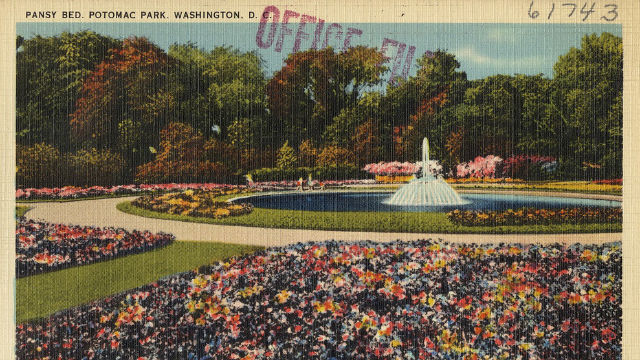SUMMARY
This is AI generated summarization, which may have errors. For context, always refer to the full article.

WASHINGTON DC, USA – A walking tour among the monuments in Washington, DC is a right of passage. The must-dos: Meander along the cherry blossom trees while gazing out over the Tidal Basin toward the Jefferson Memorial. Read the entire Gettysburg Address at the foot of US president Abraham Lincoln’s towering statue at the Lincoln Memorial. Have a quiet moment of reflection at the Vietnam Veterans Memorial.
But ask any DC resident to give you a tour and you’ll likely be answered with some eye rolls and complaints of being in the same vicinity of tourists.
That’s where Virginia residents Erwin Tiongson and Teresa Carandang-Tiongson’s unusual walking tour saves the day.
The husband-and-wife duo are the history buffs behind the new blog Philippines on the Potomac, which maps out all of the places in the Washington metro region that have a historical tie to Philippine-American history and culture.
The walk along the Tidal Basin in Potomac Park, for example, takes on an entirely different meaning when you find out that its design was based off Luneta Park in Manila. Potomac Park should be converted “into a glorified Luneta Park where all of Washington could meet,” first lady Helen Herron Taft once said.
And Sunday mass at the Cathedral of St Matthew the Apostle in downtown DC is all the more significant when you realize the funeral of president Manuel Quezon was held here in 1944, years before US president John F. Kennedy’s funeral would take place in the very same church.
“My assumption was that there was not much work left to do,” Erwin recalls thinking when he and Teresa decided to start the blog in September 2012. “I assumed that people had written books about Philippine-American history and culture. But in fact, I was surprised to find such little information.”
So one evening, Erwin, an economist, and Teresa, a freelance writer, wrote down every tidbit of information they could remember about Philippine-American history in Washington. ”We knew all of these little things here and there, and came up with 30 places in Washington, DC that had some links,” says Erwin. “We thought this could turn into a little walking tour.”

Search for history
But while naming the places was simple, researching the historical significance of each location was no easy feat. Searching on Google became an art form; they found more information by purposely misspelling “Filipino” as “Philipino.”
“You had to put yourself in a certain frame of mind,” says Erwin. “If I were putting in archives some of these materials hundreds of years ago, it’s possible I might have misspelled things.”
Their local libraries proved helpful, too, as did old magazines they bought for $5 on eBay.com that featured articles on Maria Paloma Osmeña, the daughter of president Sergio Osmeña who lived in Washington while her family was in exile.
What proved most helpful, however, was when Erwin and Teresa reached out to their Filipino-American community in Washington. “They’ve been very generous,” Titchie says of groups like the Lim family, who provided photos of Estefania Aldaba-Lim’s 1944 wedding at the Shrine of the Sacred Heart in the Columbia Heights neighborhood. Aldaba-Lim later became first female cabinet member of the Philippines.
The website has become so successful that Erwin and Teresa’s database of locations has grown from 30 historical sites to 150. “There are so many interesting little factoids,” Teresa says of Philippine history in Washington. So many, in fact, that the two have plans to turn the blog into a walking tour app for smartphones, and perhaps even write a book.
For now, however, Philippines on the Potomac is solely a “mom and pop” venture reserved for the weekends. “We mostly did this for our children, for our boys,” says Erwin. “On some weekends we drag them to all of these places. Sometimes they’re interested, sometimes they’re bored.”
And with both sides of their families living in the Philippines, the Tiongsons acknowledge that knowing there are so many connections to home in the nation’s capital is a welcomed comfort. Says Erwin, “You’d be amazed at what you’d find.” – Rappler.com
Contributor Melissa Romero is a Washington, DC-based journalist and a member of the US-Philippines Society. She also writes about health and wellness for Washingtonian magazine.
Add a comment
How does this make you feel?
There are no comments yet. Add your comment to start the conversation.